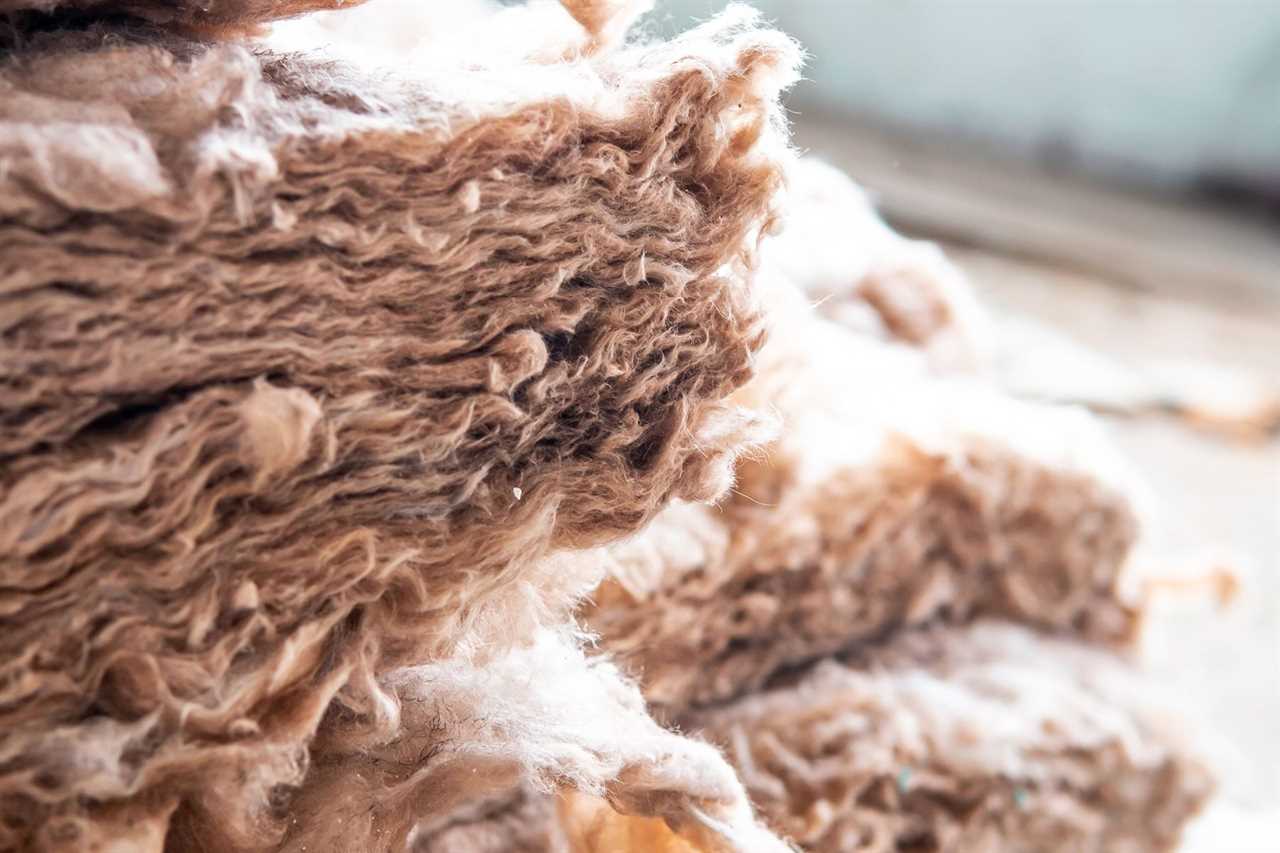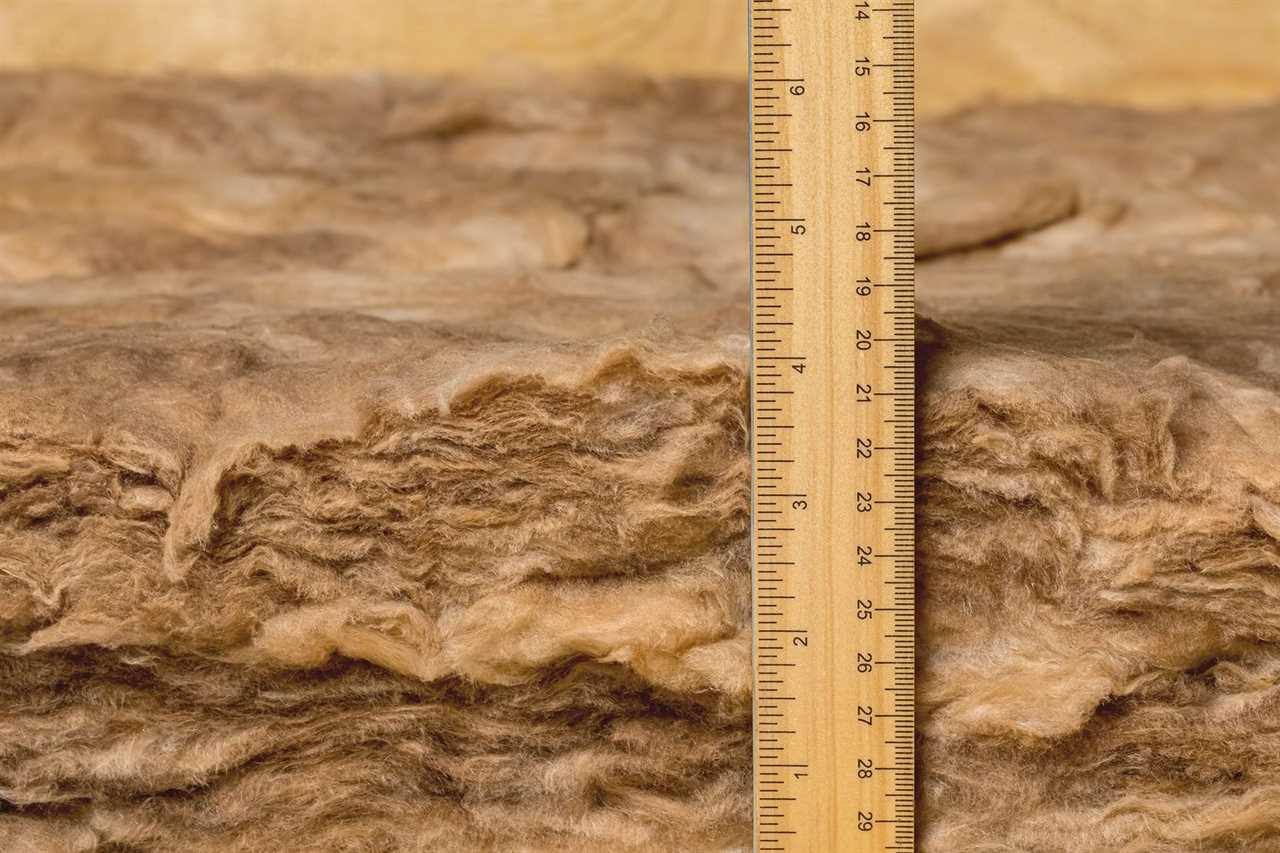Builders and homeowners shopping for insulation have many options. Fiberglass and mineral wool batts are two of the most popular, but many people choose blown-in cellulose, rigid polystyrene foam boards and polyurethane spray foam. Now there’s another option: sheep wool.
You might be thinking using sheep wool for insulation is a waste of raw material that could be turned into a comfortable sweater or suit, but actually, insulation comes from low-quality wool that would never be spun into yarn in the first place. Considering each sheep can produce two to 30 pounds of wool per year, and that there were 5,000,000 head of sheep in the U.S. in 2018, there’s a lot of B-grade material for which to find uses, and home insulation is as worthy a purpose as, say, stuffing toys or mulching your garden.
If you’ve ever installed fiberglass insulation, you know about the skin irritation and allergic reactions it causes, and you’ve probably worn the paper suit, mask and goggles. Sheep wool isn’t an irritant, so you can skip the protective clothing when installing it as insulation. Even better, it’s a renewable resource, like cork and bamboo, that grows back quickly, so using it reduces your carbon footprint. It isn’t for everyone, though, and the cost is a big reason why.
What Is Sheep Wool Insulation?
Sheep wool insulation is pretty much what you’d think. After the shearers are finished shearing a herd and collecting the wool, they separate the top-grade material from the lower-quality wool from the underbelly and around the eyes, ears and legs. They make batt insulation from this lower-grade material, sometimes adding polyester fibers as a filler.
Batts are designed to fit in standard stud framing, so they are either 16 or 24 inches wide, and they are cut to length from 12 to 16 feet and packaged as rolls. Batts that include polyester are light enough for friction to hold them in place, but some stapling may be required for pure wool batts. The batts don’t have a backing, so you staple the edges of the insulation material to the studs.
How Does Sheep Wool Insulation Work?

Like other fibrous insulation, sheep wool is filled with pockets of air, and it’s the air that provides most of the insulation. Sheep wool has one quality that fiberglass and mineral wool lack, however, and that’s the ability to retain moisture inside while staying dry on the surface. That’s how sheep are able to stay comfortable in rainy weather.
Moisture-laden insulation sounds like a mold magnet, but because the surface stays dry, mold and fungus spores are never able to get a foothold. Insects get in and make nests, though, so manufacturers treat batts with non-toxic insecticides before shipping.
Wool has another fairly curious quality: It’s flame-resistant! It has naturally high nitrogen and water content and needs lots of oxygen to burn. Tucked into a wall cavity where there isn’t much oxygen, it swells up and forms an insulating barrier that prevents flame spread. It meets the same fire resistance standards as fiberglass, mineral wool and cellulose.
What Is the R-Value for Sheep Wool Insulation?
R-value is a measure of an insulation material’s ability to prevent heat transfer, and the higher it is, the better the insulation. Sheep wool insulation has an R-value from 3.5 to 3.8 per inch, which is slightly higher (better) than fiberglass, mineral wool and cellulose, but not nearly as good as polyurethane foam.
The two most common offerings for sheep wool insulation are R13 and slightly thicker R19. In cold climates where you need more warmth, you might have to increase the wall thickness and double up the batts to increase the R-value.
How Pros and Cons of Sheep Wool Insulation

People have undoubtedly used sheep wool for insulation for ages, but the mass production of sheep wool batt insulation is a fairly new development. You may not be able to find it at your local building center, and online sources regularly run out of stock. If you can find it, you’ll get these perks:
Pros
- Temperature control: Manufacturers claim that wool can actually raise the ambient temperature when it absorbs moisture from humid air and re-releases it into dry air. Wool can also absorb heat from its surroundings, which helps keep your house cooler in the summer.
- Fire safety: Wool doesn’t burn easily, and even if it does start to smolder, it doesn’t release toxic fumes.
- Easy installation: You can handle wool insulation safely in your street clothes. It’s even safe for children who want to help.
- Soundproofing: Wool is denser than fiberglass or cellulose, and that means it can absorb sound more efficiently.
If you decide to give sheep wool insulation a closer look, these are the drawbacks to be aware of:
Cons
- Cost: One online supplier (which is currently out of stock) charges $50 per 16-inch-wide, 16-foot-long roll of R13 pure wool insulation. That’s about $2.40 per square foot, which is about twice the price of fiberglass and one-and-a-half as much as mineral wool. Insulation with a wool/polyester blend is usually cheaper.
- Chemicals: Before you purchase sheep wool insulation, check which chemicals it has been treated with, because some are more toxic than others. Manufacturers have commonly used boric acid to control insects, but this chemical is toxic enough to be banned in some places. Look for products treated with Eulan SPA, a non-toxic insecticide derived from chrysanthemums.
- Possible odors: Depending on how many times the wool is washed during processing, lingering odors caused by natural waxes may remain in the material. They are slight compared to the odor of a sheep wool rug, and because the wool is enclosed in the wall, they usually aren’t noticeable, although sensitive people may detect them.
Sustainability: Natural Fiber vs. Synthetic
According to energy advice portal TheGreenAge, the production of sheep wool insulation consumes less than 15% of the energy needed to produce fiberglass insulation.
Did you miss our previous article...
https://rsssuperfeeds.com/life-hacks/what-are-mormon-crickets-mormon-crickets






